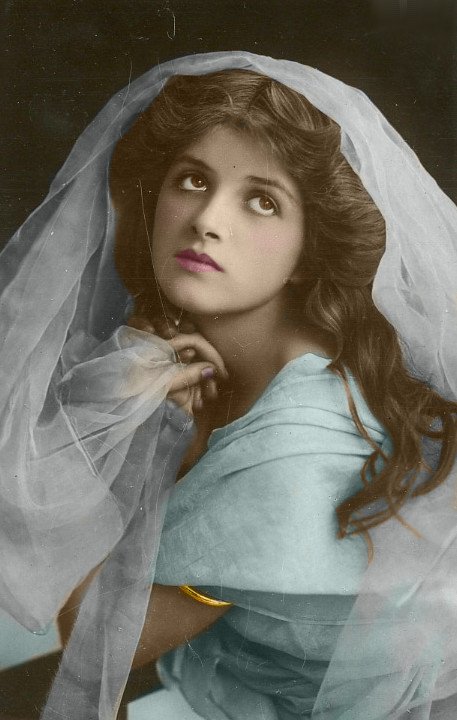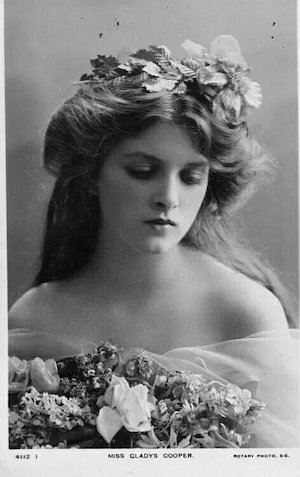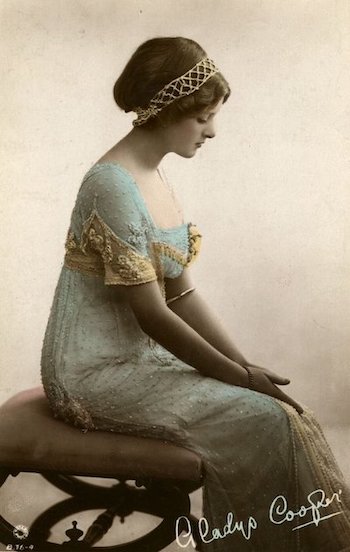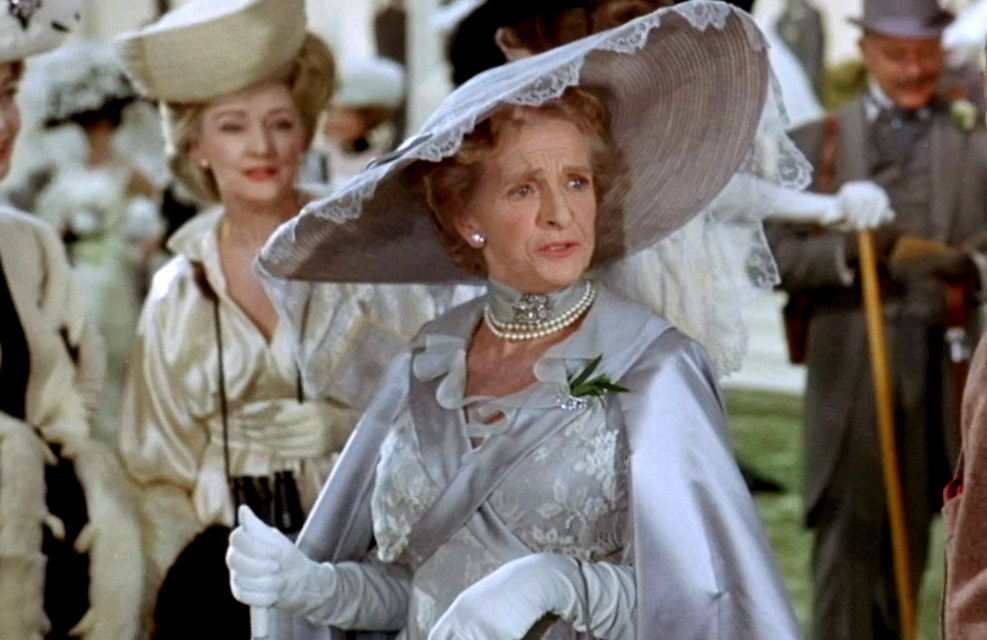Gladys Cooper enjoyed a brilliant career that spanned seven decades. From magazines to talkies to musicals to dramas, there was little she didn’t try her hand at. In the early 1900s, she began appearing in comedic and musical plays. She was a popular figure and had dozens of credits to her name by the time the Great War broke out. A stunning beauty, she was an admired model on picture postcards—some say her image was the most popular in print and carried by World War I soldiers.



Following the war, she embraced the glittering 1920s. She played Peter Pan for two years, becoming the first stage actress to “fly” via wire in the play. Her acting gained notice among critics, even earning the admiration of W. Somerset Maugham: She has turned “herself from an indifferent actress to an extremely competent one.” Playwrights began writing plays just for her to star in. Maugham himself was so impressed with her portrayal of Leslie Crosby in The Letter (a film that would star Bette Davis in 1940), he wrote two more vehicles for her to put on. By the late 1920s she was a producer and theatre manager as well as a name in lights.
She also began dabbling in early silent films around this time. It would be the outbreak of WWII that would send her to America and shift her career to film. She made her Hollywood debut in Alfred Hitchcock’s Rebecca. It was a small part but she shone in it. As Laurence Oliver’s sister, she brought levity and humanity to a tense otherworldly film.
She followed with another supporting role in That Hamilton Woman, a Vivien Leigh vehicle released just after Gone With the Wind. The semi-historic costume drama centers around a music hall courtesan in the Napoleonic wars. Cooper plays Lord Horatio Nelson’s wife, one of the Hamilton woman’s conquests.
Cooper’s breakout film role came in 1942 opposite Bette Davis in Now, Voyager. It’s a romantic melodrama where Davis changes and grows emotionally and psychologically. Gladys Cooper plays older than her age as a domineering and disapproving mother. She struts and commands with her clipped tongue and ramrod straight posture. The role earned Cooper an Oscar nomination.
One of my favorite of Cooper’s screen roles is as Mrs. Hamilton in The Bishop’s Wife. She plays a wealthy widow who promises to donate money to make the bishop’s cathedral a reality. Her demands, however, are thawed by the charm of an angel played by Cary Grant. Really, what chance did she have against that? Once again, her gentility and her humor shine through in this role.
Gladys Cooper joined the cast of The Pirate in 1948. Vincente Minnelli directed the colorful if haphazard musical starring Gene Kelly and Judy Garland. Cooper plays Garland’s aunt Inez in the swashbuckling, Caribbean-based adventure. While she has arranged a respectable but boring marriage for her orphaned niece, she is a kind, if old-fashioned, chaperone.
Following WWII, Gladys Cooper returned to England to revitalize her stage career again. She would spend the next three decades under the footlights, as well as in front of the film camera. She appeared in three episodes of the television classic The Twilight Zone, and co-starred in a slick 1960s show called The Rogues. But her focus was the British stage.
She returned to Hollywood for the lavish production of My Fair Lady. Cooper dazzles as Henry Higgins’s mother. She is sharp-witted and sharply-dressed. The scene where she dresses down her son with Eliza, right in front of his moody self, makes me snort laugh every time. She received her third Academy Award nomination for Best Supporting Actress for her role as Mrs. Higgins.

The actress was awarded the Order of the British Empire and named Dame Gladys Cooper by Queen Elizabeth II in 1967. She was quoted as saying: “Retire? Whatever for? Who cares how old I am? Who cares how long it was since I first played Peter Pan?” Unfortunately she died from pneumonia in 1971, before realizing her plans of taking her Tony-award nominated role in the The Chalk Garden to Canada.
Originally written for DVD Netflix
